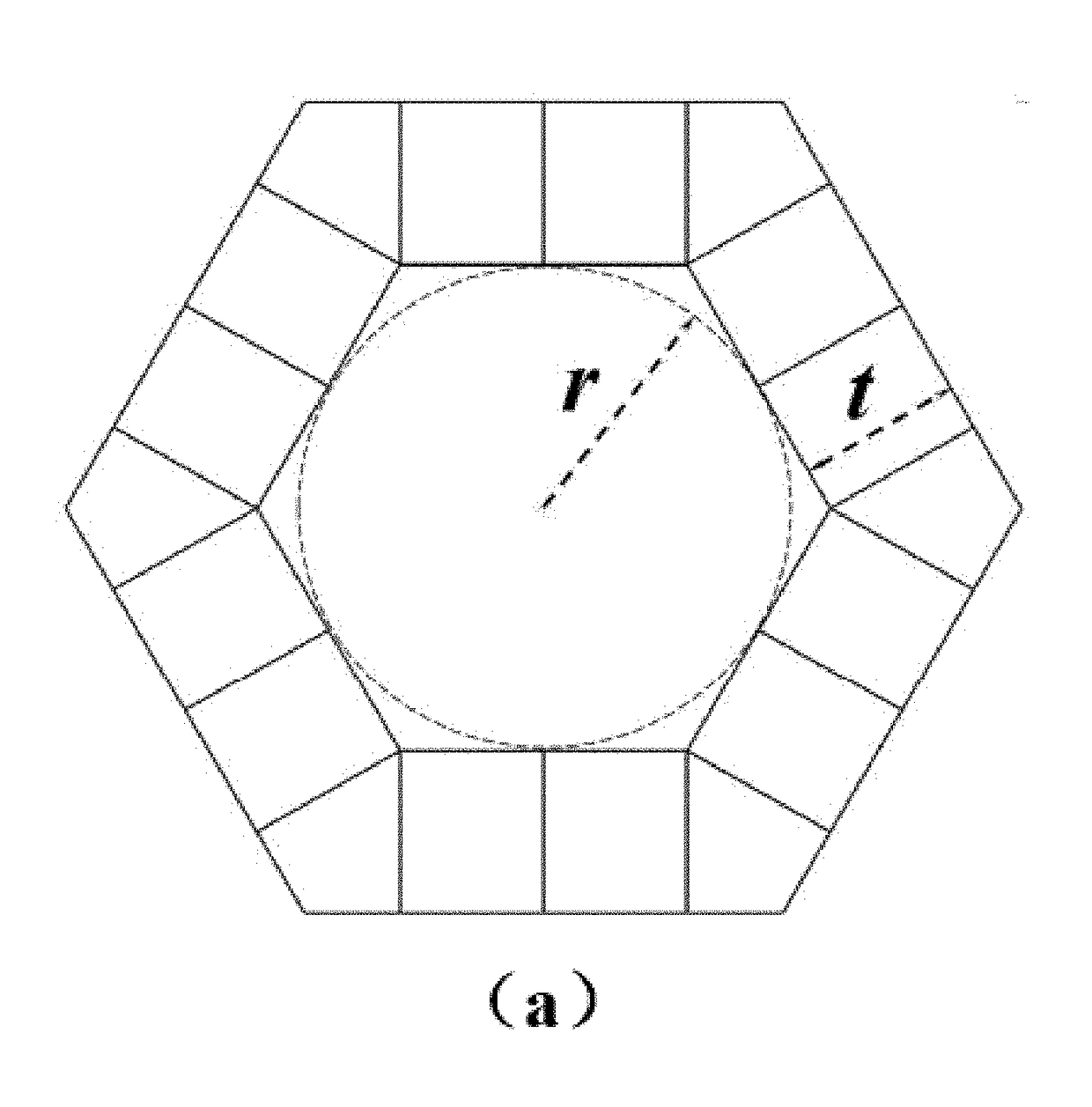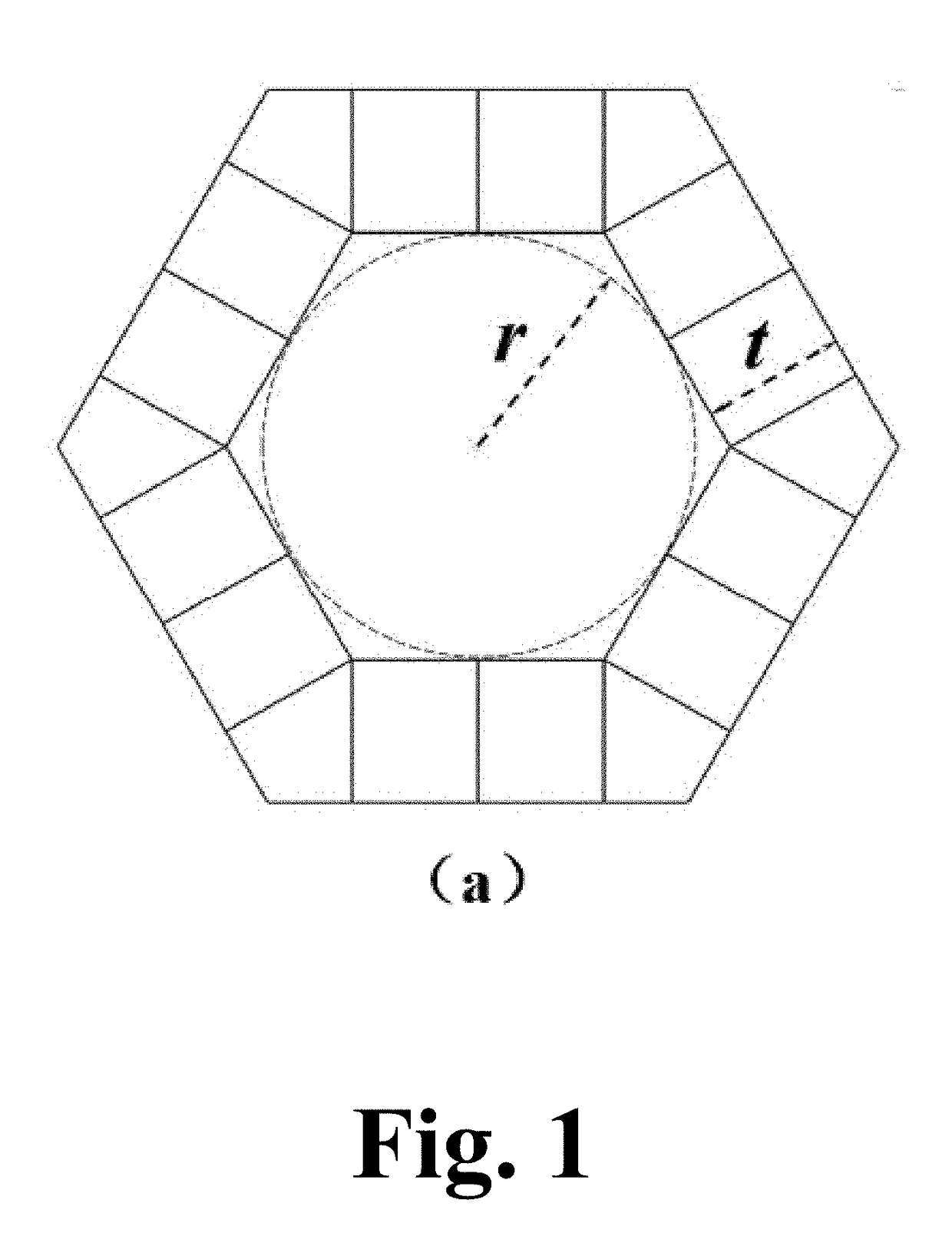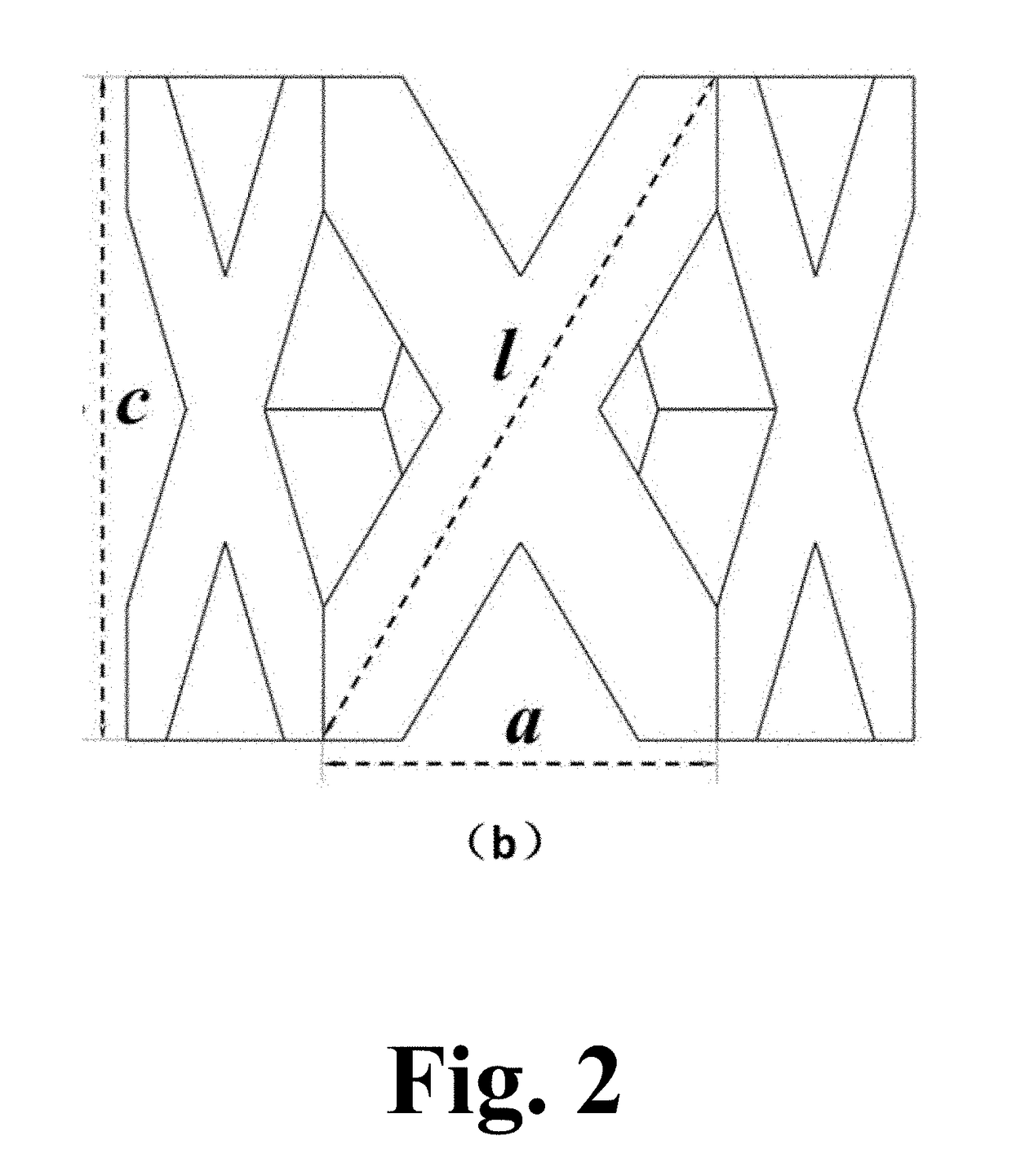Medical Implant Porous Scaffold Structure Having Low Modulus
- Summary
- Abstract
- Description
- Claims
- Application Information
AI Technical Summary
Benefits of technology
Problems solved by technology
Method used
Image
Examples
example 1
[0065]For the basic unit of the hexagonal prism, when α-Ti (E=110 GPa, v=0.33) was selected as the implant materials, as shown in FIG. 3, the finite element method can be used to calculate the relationship between the relative modulus of the scaffold materials and the relative density of the scaffold. The result showed that when η1 was selected to range from 1.0 to 2.5, η2 was selected to range from 0.10 to 0.50, and the inscribed circle radius r of the interconnected pore was selected to range from 150 μm to 750 μm, the relative modulus of the scaffold materials could be less than 30 GPa, meeting the modulus range of human cortical bone.
example 2
[0066]For the basic unit of the quadrangular prism, when α-Ti (E=110 GPa, v=0.33) was selected as the implant materials, as shown in FIG. 4, the finite element method can be used to calculate the relationship between the relative modulus of the scaffold materials and the relative density of the scaffold. The result showed that when η1 was selected to range from 1.0 to 2.5, η2 was selected to range from 0.1 to 0.35, and the inscribed circle radius r of the interconnected pore was selected to range from 150 μm to 750 μm, the relative modulus of the scaffold materials could be less than 30 GPa, meeting the modulus range of human cortical bone.
[0067]Mg Example Group
example 3
[0068]For the basic unit of the hexagonal prism, when Mg (E=44 GPa, v=0.26) was selected as the implant materials, as shown in FIG. 3, the finite element method can be used to calculate the relationship between the relative modulus of the scaffold materials and the relative density of the scaffold. The result showed that when η1 was selected to range from 1 to 2.5, η2 was selected to range from 0.1 to 0.5, and the inscribed circle radius r of the interconnected pore was selected to range from 150 μm to 750 μm, the relative modulus of the scaffold materials could be less than 30 GPa, meeting the modulus range of human cortical bone.
PUM
 Login to View More
Login to View More Abstract
Description
Claims
Application Information
 Login to View More
Login to View More - R&D
- Intellectual Property
- Life Sciences
- Materials
- Tech Scout
- Unparalleled Data Quality
- Higher Quality Content
- 60% Fewer Hallucinations
Browse by: Latest US Patents, China's latest patents, Technical Efficacy Thesaurus, Application Domain, Technology Topic, Popular Technical Reports.
© 2025 PatSnap. All rights reserved.Legal|Privacy policy|Modern Slavery Act Transparency Statement|Sitemap|About US| Contact US: help@patsnap.com



